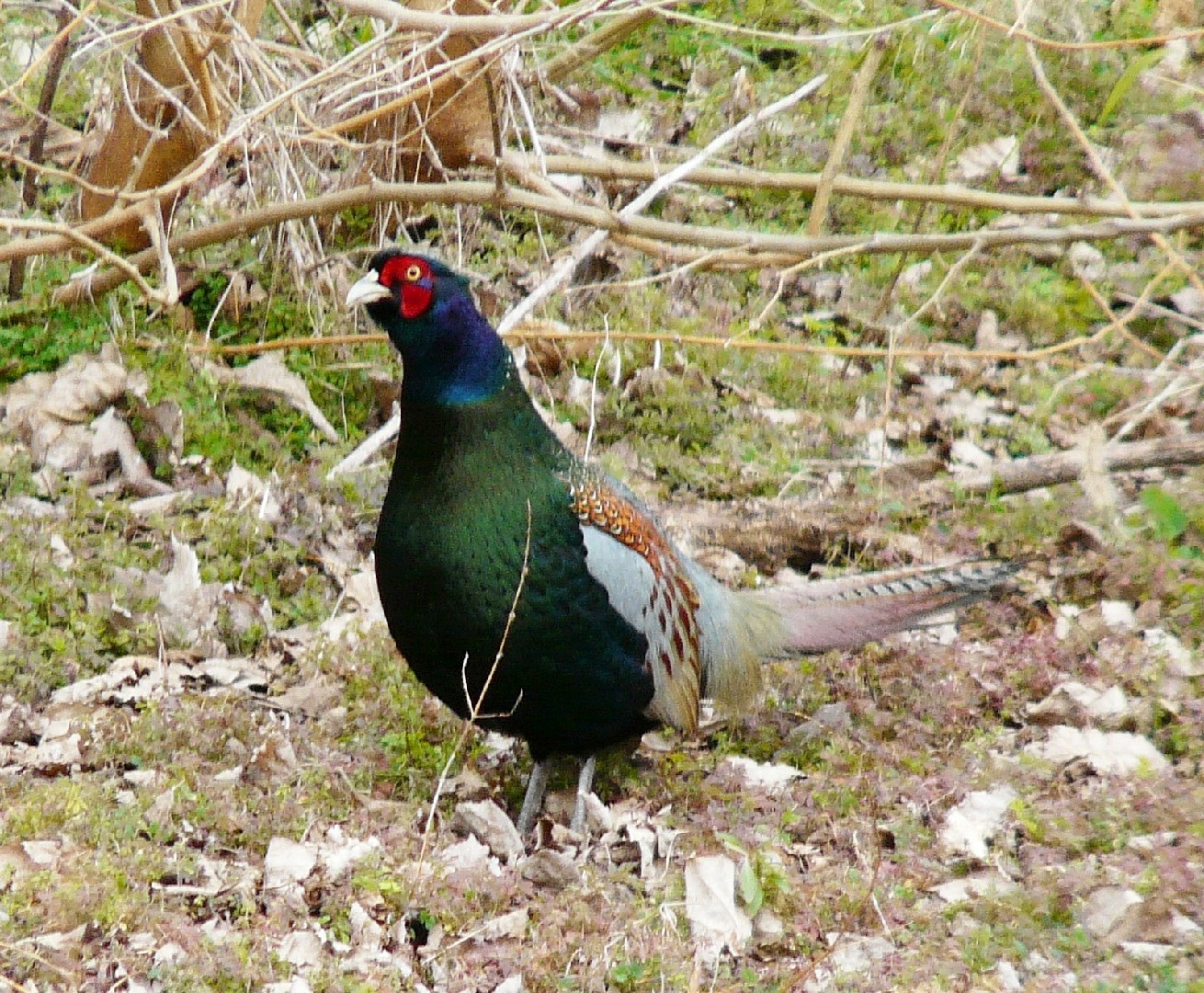Green Pheasant
A species of Typical Pheasants Scientific name : Phasianus versicolor Genus : Typical Pheasants
Green Pheasant, A species of Typical Pheasants
Botanical name: Phasianus versicolor
Genus: Typical Pheasants
Content
Description General Info
Description
The male (cock) has dark green plumage on the breast, neck, mantle, and flanks. The male also has bluish-purplish hood with clear ear-tufts, red wattle, and long, pale grey-banded tail. The female is smaller than the male, with a shorter tail, and has brownish black colored plumage, with dark brown feather fringed pale brown. The males of this subspecies have the darkest plumage, which is mainly green. The male Pacific Green Pheasants, P. v. tamensis, have lighter plumage than the nominate subspecies. Their feathers are more purple and blue. The male Northern Green Pheasant P. v. robustipes have the lightest plumage and their crown and mantle are more bronze than those of the other subspecies. The females of all three subspecies look much more similar, though, like with the males, the females of P.v versicolor normally have the darkest plumage and the females of P. v. robustipes have the lightest. 
Size
81 cm
Nest Placement
Ground
Feeding Habits
Green Pheasant primarily consumes insects, worms, grains, and various plants. They forage on the ground, often at dawn or dusk. In captivity, they adapt to pellets, seeds, and live food. Notable for diverse foraging strategies adapting to availability.
Habitat
The green Pheasant is typically found in environments that include forest edges, open woodlands, and scrublands. These birds are also adaptable to human-altered landscapes such as parks, agricultural fields, and plantations where adequate vegetation cover is present. They favor areas with a mix of grassland and tree or hedge-lined boundaries, and thrive in broadleaf forests particularly in the southern part of their range.
Dite type
Omnivorous
General Info
Feeding Habits
Bird food type
Distribution Area
It is found throughout Honshu, Shikoku, and Kyushu as well as some smaller islands; it has also been introduced in Hawaii and (unsuccessfully) in North America as a gamebird. It inhabits woodlands and forest edges, brush, grassland, and parkland. This species is common and widespread throughout its native range. It often frequents farmlands and human settlements. The introduced populations in Hawaii are stable. Populations in Western Europe have perhaps bred with the common pheasant for a number of years and no pure green pheasants exist there any longer. This species has been crossed with the common pheasant on some game farms in North America and released. 
Species Status
Though the green pheasant has a decreasing population, its population is not severely fragmented. On a local and national level, they are used for food, sport hunting, specimen collecting and as pets or display animals. None of these practices are found on an international level. The Green pheasant is one of the 29 designated 'game species' in Japan. These are the only species that can legally be hunted. A hunting license is required. 
